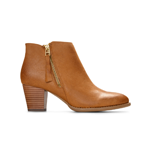
Pain In Heel?: Causes and Remedies
By Dr. Jackie Sutera
The most common cause of heel pain, plantar fasciitis originates from an inflammation to your plantar fascia. This flat band of tissue connects to the bottom of your heel bone to your toes, as well as supporting the arch of your foot. When the fascia is inflamed swelling and pain usually present. Common causes of plantar fascia are:
- Flat feet or high arches
- A tight Achilles tendon or calf muscles
- Weight issues
- Standing, walking, or running for long periods of time, especially on hard surfaces
- Too much time walking or standing barefoot
- Worn out, thin or poorly fitting shoes
Treatments:
Stretches:
- Therapeutic stretches toe and calf stretches can provide relief, and are especially important the first thing in the morning. Stretching helps to loosen the connective soft tissue that holds our bones and joints together. Some of these soft tissues include: tendons, ligaments, fascia, capsule, muscle, etc. When these are loose and limber it reduces the chance of injury, inflammation and pain.
- I would argue that calf stretches are the most important for the overall foot. This will lengthen and loosen both the achilles and plantar fascia, two very important structures that will cause inability to walk properly and pain if there is a problem. Two other great foot stretches are: forefoot stretch (picture pulling apart the front of the foot by grabbing onto the great toe joint and pinky toe joint, and ball of foot stretches (bending the toe joints back toward the top of the foot, and then forward toward the bottom of the foot).
- Massage and icing, in my opinion, go hand in hand with stretching, especially when talking about relieving foot pain and discomfort. Massaging also helps to relieve tightness, encourages blood flow and circulation which is healing and regenerative. Ice is a natural anti inflammatory and can assist in healing and pain management.
Choice of shoes:
- Avoid walking barefoot. Wearing supportive slippers while at home is also effective in providing relief. Walking barefoot for prolonged periods of time can cause pain and inflammation. A lack of support and shock absorption can encourage slow atrophy of the fat pads on the bottom of the feet and also can cause conditions like: plantar fasciitis, tendinitis, and even stress fractures. Wearing slippers can provide support, cushion and shock absorption- three very important features in footwear that help prevent and treat foot pain.
- A new pair of shoes may also provide relief. Old shoes that are old and worn out and shoes that are too thin and flat can contribute and cause heel and foot pain.
- Choosing comfortable, cushioned and supportive shoes with arch support and with a thicker sole to absorb shock are best for people with fasciitis. Don’t underestimate how important shoe gear is! Wearing shoes that offer support, cushioning and shock absorption, (like styles from Vionic), is super important. If you don’t have enough of these 3 things, you can eventually develop pain, inflammation and injury.
- Choose shoe inserts for plantar fasciitis, like styles from Vionic. Be sure to use shoe inserts in both shoes, not just on whichever foot hurts.
Things to keep in mind:
- Use a gel mat for the kitchen, your standing desk, and any other place where you tend to stand in one place a lot.
- Modifying some higher impact activities that lead to foot pain and resting the feet is very important when you have heel pain.
- If pain persists or worsens, it may be time to see your podiatrist.
Be Proactive in Helping to Relieve your Pain:
While many people might not feel or want to reveal that something is “wrong” with them, it is important to be true to yourself, especially when it comes to health. Things that someone might feel are minor could lead to more issues down the road. It is very possible that one of these treatments might relieve your pain quickly and you may never have to deal with it again. It might take a combination, but it is important to take care of your body before additional problems might arise.
About the Author:
Dr. Jacqueline Sutera is a surgically trained doctor of podiatric medicine specializing in the prevention and treatment of foot pathology. She graduated from Fordham University with a Bachelor of Science degree in Biology and Philosophy. She later attended the New York College of Podiatric Medicine where she earned the degree of Doctor of Podiatric Medicine (DPM). Dr. Sutera received her postgraduate residency training at the busy level-one trauma center at Jamaica Hospital in Queens, NY and Brookdale Hospital in Brooklyn, NY. During her time there, she served as chief surgical resident and received and completed training in all aspects of podiatric medicine and surgery. Dr. Sutera is Board Certified in Foot Surgery and is a Fellow of the American College of Foot & Ankle Surgeons. She is also a proud member and spokesperson for the American Podiatric Medical Association and the New York State Podiatric Medical Society. As one of NYC’s premier podiatric physicians, she is a caring, conscientious and extremely personable doctor who prides herself on being holistic in her approach to foot care. Where other doctors treat feet only locally, she has a unique gift of being able to link some foot problems to other underlying conditions taking place in the body.









